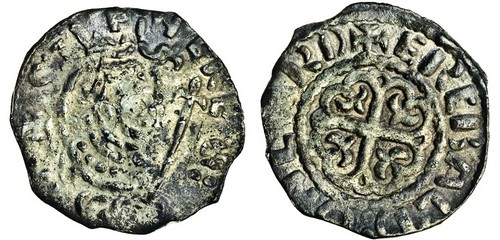
Auction: 14004 - Ancient, British and Foreign Coins and Commemorative Medals
Lot: 1506
Scotland, David I (1124-53), Penny, 1.32g, period A, in the name of Stephen, Carlisle, Erembald, crowned bust right, sceptre before, partial inner circle, +stefine rex:, rev. +erebald:on:card, cross moline, a fleur in each angle (Mattinson and Cherry, David I Carlisle group B, fig 7; N.873; S.5002), obverse weakness on bust, full flan, exceptional reverse detail, good fine / very fine, extremely rare, one of the earliest issues of the Scottish coinage
provenance
Found near Wroughton, Wilts, 2012
One of two coins from a dispersed hoard, Treasure report, 2012 T544 - for the other, see lot 1375.
A mint is thought to have been set up at Carlisle late in the reign of Henry I to take advantage of silver found near Alston in the northern Pennines. On the death of Henry I in 1135, David I of Scotland invaded Northern England taking control of much of the country north of the river Tees. Stephen, alarmed by this invasion moved north and concluded the Treaty of Durham with David I in 1136 which allowed the Scots to retain Carlisle and with it the mint.
This coin belongs to the recently defined Scottish Carlisle group b, which copies the 'Watford' Cross Moline type (BMC 1) of Stephen. All coins of this type are struck from locally cut dies and are known for three moneyers, Erembald, Hudard and Wilealme. They are thought to date from after the 1136 Treaty of Durham and to be issues of the Scots in the name of Stephen with Carlisle under the control of earl Henry, David I's son, who had paid homage to Stephen for the Lordship of Carlisle. The coins therefore acknowledge the overlordship of Stephen.
Subject to 20% VAT on Buyer’s Premium. For more information please view Terms and Conditions for Buyers.
Sold for
£2,600




